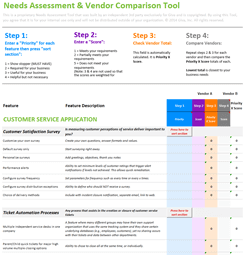24 Unique Challenges of Customer Service with Solutions for the Modern Technological Era
Customer service in the technology age has changed from simple interactions to multifaceted ones. Consumer expectations are different now and often more demanding. These bring many unique challenges to customer service teams, as they strive to represent their brand in the best way possible by providing the best service to customers.
In the article below, we first briefly examine how technology has brought new customer service challenges to teams. Then we provide 24 examples of modern challenges in customer service, and offer a practical solution to each. And finally, we look at how these challenges can be presented in an overall view with general strategies to address each.

How Technology Has Brought New Customer Service Challenges
Technology has brought unprecedented opportunities to customers, and businesses, for connectivity and convenience. These in turn have created new and unique challenges for customer service organizations to plan for, most regarding the ways that customer expectations have changed:
- Seamlessness: Technology has allowed multiple communication channels to work together. Customers now expect to be able to contact customer service in any way they prefer for a seamless customer experience.
- Instant Access: The availability of the Internet and mobile devices has given customers constant access to paths of communication. This has translated into the customer service realm, and now customers expect to have instant access to support teams as well.
- Preferences: With systems being able to track more about customers, this raises customers' expectations for their information to be used to provide better service based not only on channel preferences, but specifically who they are and what they like as consumers. For example, friendly customer service that addresses them by name, or loyalty rewards for things that interest them.
- Multiple Media Experience: The advancement of hand-held devices and the increased speed of networks has allowed for customers to "experience data" in ways beyond words. Text is put aside more and more by images and video, and customers now expect these types of interactions also.
In customer service, customer expectations drive support, and so, teams need to proactively modify their processes to meet these requirements.
24 Challenges of Customer Service Brought by Today's Technology with Solutions
The following are modern challenges for customer service teams brought by technology adoption, each with a solution your organization can implement to address the issue:
The Challenge | The Solution | |
24/7 Availability |
Meeting the expectation of round-the-clock customer support. |
Implement a combination of automated tools like chatbots for basic inquiries and round-the-clock shifts for human agents to handle more complex issues. |
Multichannel Communication |
Managing customer inquiries across various platforms like social media, email, chat, and phone. |
Use a unified Customer Relationship Management (CRM) and flexible ticketing system to streamline communication across various channels and ensure consistency in responses. |
Instant Gratification Expectation |
Dealing with customers who expect immediate responses and solutions. |
Set clear response time expectations and use automation for quick acknowledgment of customer inquiries, followed by personalized responses as soon as possible. |
Personalization |
Customizing customer interactions to meet individual preferences and needs. |
Utilize customer analytics and data to customize offers and interactions according to past purchases and personal preferences. |
Data Privacy Concerns |
Ensuring customer data security and compliance with regulations like GDPR and CCPA. |
Invest in robust cybersecurity measures, regularly update privacy policies, and strictly account for compliance with relevant regulations. |
Managing Online Reviews and Ratings |
Responding effectively to both positive and negative feedback on review platforms. |
Monitor review platforms proactively, respond promptly and professionally to all feedback, and use constructive criticism to improve products or services. |
Handling Social Media Escalations |
Addressing customer complaints and issues in the public eye of social media. |
Train social media support teams to address issues swiftly, empathetically, and publicly, while also providing avenues for private resolution. |
Navigating Language Barriers |
Serving a diverse customer base with different languages and cultural backgrounds. |
Offer multilingual support options and use translation tools to facilitate communication with customers in their preferred languages. |
Tech Troubleshooting |
Assisting customers with troubleshooting technical issues with products or services. |
Provide comprehensive online resources, tutorials, and troubleshooting guides, and offer live chat or phone support for complex technical issues. |
Automation Integration |
Balancing automation with personalized human touch in customer interactions. |
Find a balance between automated responses and human interaction to enhance efficiency without sacrificing the personal touch. |
Remote Work Challenges |
Supporting remote customer service agents and ensuring productivity and connectivity. |
Equip remote agents with reliable technology, provide ongoing training and support, and emphasize a strong team culture through virtual meetings and collaboration tools. |
Cross-Department Collaboration |
Coordinating with other departments like sales, marketing, and product development to provide comprehensive support. |
Implement CRM systems or project management tools to facilitate communication and collaboration between different departments. |
Adapting to New Technologies |
Staying updated with emerging technologies like AI, chatbots, and voice assistants. |
Stay informed about emerging technologies through providing training programs, pilot testing new tools, and partnering with tech vendors to implement innovative solutions. |
Training and Skill Development |
Continuously training agents to keep up with evolving customer needs and technology. |
Offer regular training sessions, workshops, and access to online resources to keep agents updated on industry trends and new technologies, along with customer service best practices. |
Handling Customer Expectations vs. Reality |
Managing customer expectations effectively, especially when it comes to product capabilities or service delivery times. |
Provide accurate information about product features, delivery times, and potential limitations up front. |
Crisis Management |
Responding promptly and empathetically to customer concerns during crises or emergencies. |
Develop a crisis communication plan, designate spokespersons, and communicate proactively with customers, demonstrating empathy, transparency, and a commitment to resolving issues. |
Sustainability and Corporate Responsibility |
Addressing inquiries related to sustainability practices, ethical sourcing, and corporate social responsibility. |
Incorporate sustainability initiatives into your business practices, communicate these efforts to customers, and actively engage with environmentally conscious consumers. |
Globalization Challenges |
Providing consistent service quality across different regions and time zones. |
Customize support processes and communication channels to cater to the cultural preferences and time zones of different regions, and consider hiring local support staff or using translation services. |
Balancing Cost Efficiency and Customer Satisfaction |
Finding the right balance between cost-effective solutions and maintaining high customer satisfaction levels. |
Invest in tools and technologies that improve efficiency without compromising service quality, and regularly evaluate customer feedback to identify areas for improvement. |
Dealing with Cancel Culture |
Handling customer boycotts or negative sentiment online due to controversies or perceived ethical issues. |
Address customer concerns openly and transparently, take responsibility for any mistakes, and demonstrate a commitment to addressing issues and improving in the future. |
Emotional Intelligence |
Training agents to handle emotionally charged interactions with empathy and professionalism. |
Provide empathy training for customer service agents, empower them to validate customer emotions, and equip them with conflict resolution skills to de-escalate tense situations. |
Legal and Compliance Challenges |
Ensuring that customer service practices align with legal requirements and industry standards. |
Stay informed about relevant laws and regulations, conduct regular audits to ensure compliance, and work closely with legal advisors to address any compliance issues proactively. |
Measuring and Improving Customer Experience |
Implementing metrics and strategies to continuously monitor and enhance the overall customer experience. |
Implement Key Performance Indicators (KPIs) to measure customer satisfaction, regularly solicit feedback through surveys and reviews, and use insights to make data-driven improvements to the customer experience. |
Continued Evolving Customer Demands |
Anticipating and adapting to continued changing customer preferences and expectations. |
Stay agile and responsive to changing customer needs by regularly collecting feedback, analyzing data trends, and adapting strategies and processes accordingly. |
Key Takeaways: Overall View of Modern Challenges and Solutions for Today's Customer Service
The following is a final overall look at the challenges of customer service in today's world and ways support organizations can meet and exceed them:
-
Technological Advancements
Struggles in adapting to the rapid pace of technological change, leading to challenges in integrating new tools and platforms effectively.
Solution: Encourage a mindset of experimentation, learning, and adaptation within the organization to embrace new technologies and stay ahead of the curve.
-
Customer Expectations
Customers have increasingly high expectations for service quality, responsiveness, and personalization, putting pressure on businesses to deliver exceptional experiences.
Solution: Communicate openly with customers about service capabilities, limitations, and expected timelines to manage expectations effectively and build trust.
-
Communication and Engagement
Difficulties in providing consistent and cohesive support experiences across multiple communication channels, leading to disjointed interactions and frustrated customers.
Solution: Develop a unified communication strategy that integrates all channels seamlessly and ensures consistent messaging and support experiences.
-
Operational Efficiency
Facing the challenge of maintaining operational efficiency while delivering high-quality customer service, often including resource constraints and competing priorities.
Solution: Identify opportunities to streamline workflows, automate repetitive tasks, and leverage technology solutions to improve efficiency without compromising service quality.
-
Regulatory and Ethical Considerations
Working in complex regulatory environments and compliance requirements, which can vary across industries and jurisdictions, leading to legal risks and challenges.
Solution: Stay informed about relevant regulations, conduct regular compliance audits, and provide comprehensive training to ensure adherence to legal requirements and mitigate risks.
-
Continuous Improvement
Struggles with creating a culture of learning, innovation, and continuous improvement, hindering service teams' abilities to adapt to changing customer needs and market dynamics.
Solution: Work toward a culture that values learning, encourages experimentation, and rewards innovation, empowering employees to contribute ideas, embrace change, and drive continuous improvement initiatives.
Giva Can Help You Exceed Today's Customer Service Challenges
With Giva's Customer Service software, you'll be up and running in days, and your customer service team can be trained in hours.
Our customer service management system gives you:
- An intuitive and friendly interface
- Video tutorials
- Integrated knowledge base
- End-user self-service portal
- Customer satisfaction surveys
- Real-time custom reporting and KPIs
- Our AI Copilot summarization and re-writing capabilities
There is much more, but see for yourself by scheduling a demo today, or starting a free 30-day trial!





